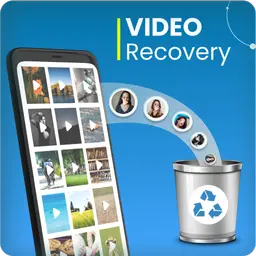In today’s digital age, photos and videos play a crucial role in capturing and preserving memories. However, the loss of these precious files due to accidental deletion, formatting, or system crashes can be devastating. Fortunately, photo and video recovery software has emerged as a solution to this problem. These tools are designed to retrieve lost, deleted, or inaccessible photos and videos from various storage devices, offering a lifeline to those who fear their memories may be gone forever.
What is Photo and Video Recovery?
Photo and video recovery refers to the process of retrieving lost or deleted multimedia files from digital storage devices. These storage devices can include hard drives, memory cards, USB drives, digital cameras, smartphones, and more. The recovery process involves using specialized software designed to scan the storage medium for remnants of lost files and restore them to a usable state.

How Photo and Video Recovery Works
Photo and video recovery software operates based on the principle that deleted files are not immediately erased from the storage medium. Instead, the space occupied by these files is marked as available for new data. Until new data overwrites this space, the original files remain recoverable. Here’s a step-by-step breakdown of how the recovery process typically works:
- Scan Initiation: The recovery software scans the storage device to locate any recoverable files. This involves checking the file system for entries that have been marked as deleted.
- Data Analysis: The software analyzes the data structures on the storage medium to identify the location and size of the lost files. This can include looking at metadata, file headers, and other markers that indicate the presence of photos and videos.
- File Reconstruction: Once the lost files are identified, the software reconstructs the files based on the found data fragments. Advanced algorithms help piece together the data to form complete and usable files.
- Recovery and Save: The reconstructed files are then saved to a different storage location to prevent overwriting any other potential lost data on the original device.
Features of Photo and Video Recovery
Photo and video recovery software comes equipped with a variety of features designed to enhance the recovery process. Here’s a detailed look at some of the most common and beneficial features:
- File Type Support: Most recovery tools support a wide range of photo and video file formats, including JPEG, PNG, MP4, AVI, and more. This ensures compatibility with files from various devices and applications.
- Deep Scan: This feature allows the software to perform a thorough examination of the storage device, increasing the chances of recovering deeply buried or fragmented files.
- Preview Functionality: Users can preview recoverable files before restoring them. This helps in identifying the correct files and avoiding unnecessary recoveries.
- Selective Recovery: Instead of recovering all found files, users can select specific files or file types they wish to restore, saving time and storage space.
- Recovery from Various Devices: Advanced software can recover files from a wide array of devices including SD cards, USB drives, external hard drives, digital cameras, and smartphones.
- User-Friendly Interface: A simple and intuitive interface makes the recovery process accessible to users of all technical levels. Wizards and guided steps assist users through the recovery process.
- Corruption Repair: Some tools offer the ability to repair corrupted photo and video files, ensuring that the recovered files are not only retrieved but also usable.
- Data Protection: High-quality recovery software includes features to protect the remaining data on the storage device, preventing further data loss during the recovery process.
- Multi-Language Support: To cater to a global audience, many recovery programs offer multi-language support, making them accessible to users worldwide.
Pros of Photo and Video Recovery
| Pros | Description |
|---|---|
| High Success Rate | Advanced algorithms ensure a high probability of recovering lost files. |
| User-Friendly | Intuitive interfaces and guided steps make the software accessible to all users, regardless of technical expertise. |
| Wide Compatibility | Supports a variety of file formats and devices, making it versatile for different recovery needs. |
| Preview Before Recovery | Allows users to verify the files before recovering, saving time and space. |
| Deep Scan Options | Enhances the chances of finding deeply buried or fragmented files. |
| Selective Recovery | Users can choose specific files to recover, which is more efficient. |
| Data Protection | Ensures that existing data is not further damaged during the recovery process. |
| Corruption Repair | Repairs damaged files, ensuring that recovered files are usable. |
Cons of Photo and Video Recovery
| Cons | Description |
|---|---|
| Cost | High-quality recovery software can be expensive. |
| No Guarantee | There is no 100% guarantee of recovering all lost files. |
| Time-Consuming | Deep scans can take a significant amount of time to complete. |
| Partial Recovery | Sometimes only parts of files can be recovered, leading to incomplete recovery. |
| Overwriting Risk | New data can overwrite lost files if not recovered promptly. |
| Technical Limitations | Some software may not support all types of devices or file systems. |
| Complex Corruption | Severely corrupted files may still be unrecoverable even with advanced tools. |
Photo and Video Recovery Alternatives
| Alternative | Description | Pros | Cons |
|---|---|---|---|
| Backup Services | Regularly back up data to cloud storage or external drives. | Ensures data safety, accessible from anywhere. | Requires proactive management, subscription costs. |
| Professional Recovery Services | Hire professional data recovery services for complex cases. | High success rate, handles severe data loss. | Expensive, privacy concerns. |
| Manual Methods | Use built-in OS features like Windows File History or macOS Time Machine. | Free, easy to use for simple recoveries. | Limited to basic recovery, not for severe cases. |
| Data Recovery Software Suites | Comprehensive software that includes additional tools for data management. | Versatile, offers multiple recovery options. | Can be complex, higher cost. |
| Mobile Recovery Apps | Apps specifically designed for recovering photos and videos on smartphones. | Convenient, tailored for mobile use. | Limited capabilities compared to desktop software. |
Conclusion and Verdict on Photo and Video Recovery
Photo and video recovery software is an invaluable tool for anyone facing the loss of precious multimedia files. With a high success rate, user-friendly interfaces, and support for a wide range of devices and file formats, these tools offer a reliable solution for data recovery needs. While there are some drawbacks, such as cost and no absolute guarantee of full recovery, the benefits often outweigh the cons, making it a worthwhile investment for protecting and retrieving cherished memories.
In conclusion, investing in a robust photo and video recovery solution is a prudent choice for both individuals and professionals. The peace of mind provided by knowing that lost data can potentially be recovered is invaluable, especially in an age where digital media plays such a crucial role in our lives. Regular backups and the use of reliable recovery software ensure that even if data loss occurs, it is not necessarily permanent.
FAQs on Photo and Video Recovery
1. What should I do immediately after realizing I’ve lost my photos or videos?
- Stop using the affected device immediately to avoid overwriting the lost data. Use a reliable photo and video recovery software to scan and recover your files.
2. Can I recover files from a physically damaged device?
- Recovery from physically damaged devices is possible but often requires professional data recovery services. Software-based recovery is typically limited to logically damaged or deleted files.
3. Are there free photo and video recovery tools available?
- Yes, there are free recovery tools available, but they often have limitations in terms of features and recovery success rates. Paid versions usually offer more comprehensive recovery options.
4. How long does the recovery process take?
- The duration of the recovery process depends on the size of the storage device and the extent of the data loss. Deep scans can take several hours to complete.
5. Is it safe to use photo and video recovery software?
- Yes, using reputable recovery software is safe and does not harm your device. Ensure you download software from trusted sources to avoid malware or data breaches.
6. Can all lost photos and videos be recovered?
- Not all lost files can be recovered, especially if they have been overwritten or if the storage medium is severely corrupted. However, recovery software can significantly increase the chances of successful recovery.
7. How can I prevent future data loss?
- Regularly back up your data to multiple storage locations, such as cloud services and external drives. Also, avoid mishandling storage devices and use reliable antivirus software to protect against data loss due to malware.



